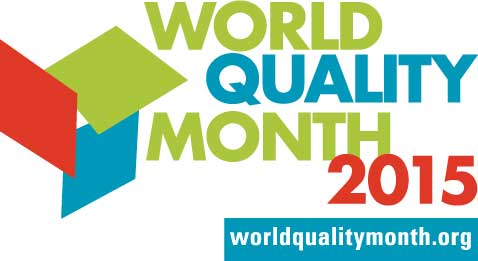
Training and retaining good staff, and understanding, setting and managing customer expectations are among the top challenges facing customer service professionals according to a survey by ASQ, a leading authority on quality.
The survey, fielded online during World Quality Month in November, polled more than 400 quality and customer service professionals worldwide. Results indicated little disparity from country to country.
Training and staff retention was cited as the top challenge by 33 percent of respondents, a big shift from ASQ’s last customer service survey in 2012, when it was rated as the least significant challenge. Twenty-nine percent surveyed this year said managing customer expectations was their No. 1 challenge and 28 percent said choosing the right technology to create a better customer experience was their biggest hurdle. Nearly 26 percent reported that obtaining a Voice of the Customer that everyone accepts as valid was their greatest barrier to providing excellent customer service.
These issues often lead to customer dissatisfaction. Escalating customer expectations lead to the most common customer complaints reported in the survey, namely:
- 55 percent of respondents say timeliness in service delivery is the most often heard complaint
- 37 percent say long waits, such as store lines and waiting for shipped products is the biggest complaint
- 26 percent say errors or inaccuracy in billing and payments is the major issue.
- 25 percent say lack of clear communications is the most often heard complaint.
Forty-three percent of companies say they resolve more than 75 percent of their customer quality issues within a reasonable time frame set by their organization. Ten percent don’t measure resolution of customer issues at all and 7 percent don’t set a timeframe for resolving issues.
Technology Key to Grow Customer Loyalty
According to the survey, more companies are putting an emphasis on using technology to provide a better customer experience with the following methods:
- 74 percent of respondents say they use data from customer surveys to analyze customer preferences
- 54 percent use operations data to anticipate where customers will have problems
- 50 percent of respondents use automated business processes to improve efficiency and keep costs low
- 27 percent say they use social media channels to create a dialog with customers and generate feedback
- 23 percent use online payment methods, such as Paypal and electronic credit card payments for faster and easier transactions.
John Goodman, Vice Chairman of Customer Care Measurement and Consulting and author of Customer Experience 3.0 said:
“Customers now expect technology to continuously update them on order status as well as anticipate and respond to their next need or question. This approach is what I call delivering psychic pizza, that is, I ring your doorbell and say here is the pizza you were about to order”
“If you don’t deliver that level of service you’re no longer competitive. Most millennials do not want to pick up the phone and call you.”
The biggest implication is that service and quality executives must now partner with the CIO just to remain in the game.
In an effort to understand customers better, many companies are now measuring customer satisfaction on a regular basis. Respondents ranked the following as the most common measurement methods:
- 78 percent say customer satisfaction surveys
- 66 percent track customer complaints
- 58 percent receive input from employees
- 46 percent generate data showing process/transaction failures across the customer journey
More Customer Service Investment Needed
While 52 percent of respondents surveyed said their Chief Financial Officer accepts that investments in improving customer experiences have a positive ROI, many companies are still more likely to invest their resources in areas other than customer service. Forty-five percent of survey participants would prioritize investments in new product or service development over investments in customer service training (6 percent) and customer experience information technology (12 percent.)
The majority of companies (39 percent) also responded that they have not created a management level customer service position to help manage the customer service experience. Instead, 28 percent say that service is managed through operations and 20 percent say that it is part of the quality department.
Experts Weigh in on Improving Customer Service
Survey participants offered the following insights on what they are doing to improve customer service experiences:
- Implement automated management systems to streamline consistent reporting to clients.
- Enhance CRM platform to streamline inputting and outputting information related to quality (service defects) and customer knowledge, such as purchase history and intent, preferences, and interests.
- Offer multichannel customer service (website, my account, text, phone, email) and improve proactive communications with customers (push notifications for bill due dates, texting for updates)
- Organize “roadshows” to share current and future products and services and listen to the “Voice of the Customer” to adjust actions accordingly.
About ASQ
ASQ is a global community of people dedicated to quality who share the ideas and tools that make our world work better. With millions of individual and organizational members of the community in 150 countries, ASQ has the reputation and reach to bring together the diverse quality champions who are transforming the world’s corporations, organizations and communities to meet tomorrow’s critical challenges.




